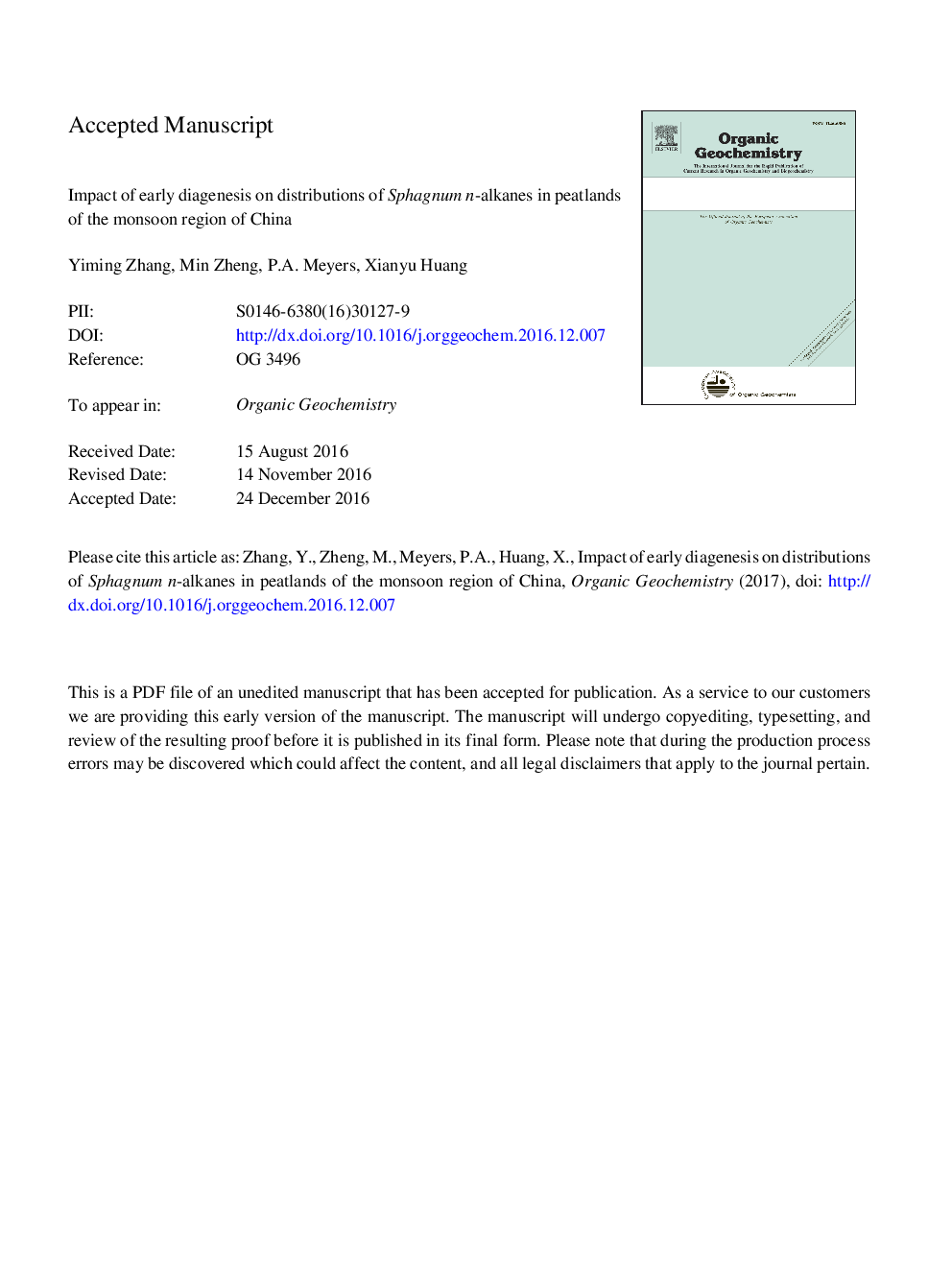| Article ID | Journal | Published Year | Pages | File Type |
|---|---|---|---|---|
| 5161472 | Organic Geochemistry | 2017 | 31 Pages |
Abstract
Sphagnum species are important peat-forming plants in wetlands the world over. Their n-alkane distributions are typically characterized by a predominance of mid-chain (C23 and C25) alkanes, a property that has been employed in paleoclimatic reconstruction based on peat sequences. However, knowledge of the fate of Sphagnum-derived n-alkanes during the very early stage of diagenesis remains limited. This study compares the n-alkane differences between samples of fresh plants and litter collected from four peatlands across the monsoon region of China. The results clearly show that the distributions of Sphagnum-derived n-alkanes differ between the plants and the litter, with proportional decreases in C23 and C25n-alkanes and increases in C29 and C31 homologs in the litter. Other than the influence of species shifts, changes in the n-alkane distributions between the fresh plants and litter samples may be caused by preferential degradation of mid-chain n-alkanes (C23 and C25) relative to their longer chain homologues (C29 and C31) during the early diagenesis of Sphagnum n-alkanes. This hypothesis is supported by decreases in CPI values and positive excursions of δ13C values of C23 and C29n-alkanes from the plant to the litter samples. Regardless of what the exact mechanisms for the changes may be, the Paq ratio should be applied with caution as a paleoclimatic proxy in peat deposits, especially those located in warmer climates or deposited during former warmer stages. Relatively low Paq values may result from elevated microbial degradation of Sphagnum-alkanes in such conditions and hence fail to record the former plant assemblages accurately.
Related Topics
Physical Sciences and Engineering
Chemistry
Organic Chemistry
Authors
Yiming Zhang, Min Zheng, P.A. Meyers, Xianyu Huang,
